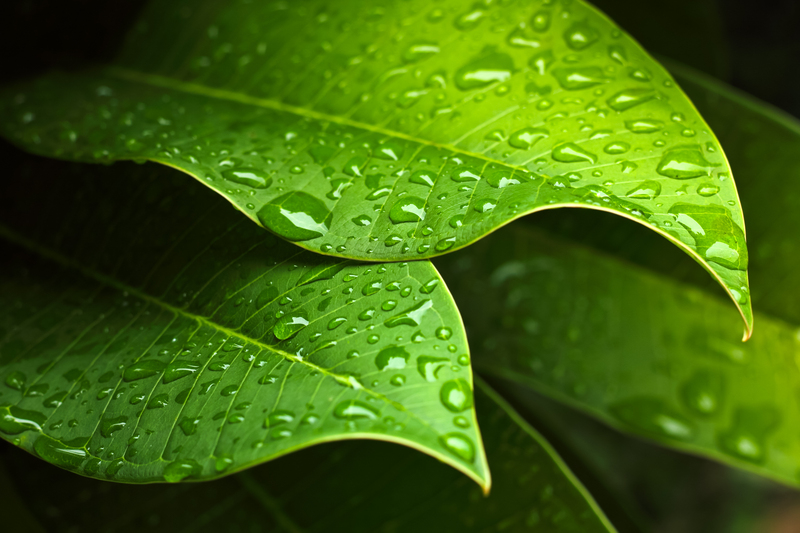Revive and Protect Your Grass from Summer Drought Stress: Comprehensive Lawn Care Guide
Summer is well-known for its bright, warm days, but if you're a homeowner or garden enthusiast, you know how quickly heat and lack of rain can stress your lawn. Brown patches, thinning grass, and wilted blades are all signs that your yard may be suffering from drought stress. This in-depth guide will teach you how to effectively revive and protect your grass from summer drought stress, ensuring your lawn stays vibrant and healthy even during the most challenging months.

Understanding Drought Stress in Lawns
Drought stress occurs when your yard doesn't receive enough moisture to support healthy grass growth. This can happen during sustained periods of hot, dry weather, when the rate of water loss through evaporation and transpiration exceeds the amount of rainfall or irrigation your lawn receives. Recognizing the signs of drought stress early is crucial to reviving and protecting your grass.
Signs Your Lawn is Suffering from Drought Stress
- Grass blades wilt or curl up.
- Color fades from bright green to blue-gray or brown.
- Footprints or mower tracks remain visible long after walking or mowing.
- Grass stops growing or thins out in patches.
- Soil is very hard and dry, often cracking in severe cases.
Best Practices to Revive Your Grass from Drought Damage
Successfully reviving your lawn after a drought involves strategic watering, proper mowing, and timely fertilization. Follow these recommended steps to restore your grass to its former glory.
1. Deep, Infrequent Watering
- Water your lawn early in the morning to minimize evaporation.
- Apply enough water to moisten the soil to a depth of 6-8 inches.
- Limit watering frequency to once or twice a week but water thoroughly each time.
- Avoid shallow, frequent watering, which can promote shallow roots and greater susceptibility to drought.
Tip: Place a small container on your lawn while watering; once it collects about 1 inch of water, you've watered enough.
2. Adjust Your Mowing Technique
- Raise your mower blade to keep grass longer--3 to 4 inches is ideal during drought.
- Never remove more than one-third of the grass blade's height in a single mow.
- Keep mower blades sharp to reduce tearing and additional stress to the grass.
Taller grass shades the soil, reduces water evaporation, and encourages deeper root growth, all of which help protect your lawn during hot, dry weather.
3. Fertilize with Care
- Do not fertilize during intense drought or high heat spells.
- Once the rain returns and the grass shows signs of revival, apply a slow-release, balanced fertilizer.
- Look for fertilizers with micronutrients that can help restore depleted soil health.
Excess fertilizer during drought can burn roots and increase stress. Wait until recovery is underway before feeding your lawn.
4. Aerate Compacted Soil
- Compacted soil makes it difficult for water to penetrate down to the roots.
- Aerate your lawn in early fall or late spring to improve soil structure and water infiltration.
- Core aerators are the most effective for most home lawns.
Aeration helps roots access water and nutrients, encouraging a deeper, more drought-resistant root system.
5. Reseed Thin or Bare Spots
- Once weather cools and soil moisture returns, overseed any patches that didn't survive the drought.
- Choose drought-tolerant grass seed varieties suitable for your region.
- Keep the seed and soil consistently moist until new grass is established.
Seeding helps your lawn grow back thick, green, and more resilient to future dry periods.
Preventative Measures: How to Protect Grass from Summer Drought Stress
Prevention is always better than cure. Implementing a few simple strategies will not only make reviving and protecting your grass from drought stress easier but can also help your lawn weather future dry seasons with minimal damage.
1. Choose the Right Grass Species
- Select drought-resistant grass varieties such as Bermuda, Zoysia, Buffalo, or Tall Fescue.
- Consult local lawn care professionals or garden centers for the best options in your climate region.
- Mix cool- and warm-season grass types to prolong your lawn's green appearance.
2. Mulch and Top Dress
- Apply a thin layer (less than 1/4 inch) of compost or organic mulch over your grass to conserve moisture and improve soil health.
- Grass clippings left after mowing provide a natural, moisture-holding mulch.
- Organic matter helps soil retain water and supports beneficial microbes that enhance drought tolerance.
3. Practice Proper Irrigation Techniques
- Consider installing a soaker hose or drip irrigation for steady, efficient watering.
- Install a rain gauge or soil moisture sensor to fine-tune your watering schedule.
- Avoid watering during peak afternoon heat when most water will evaporate before reaching the roots.
Time your irrigation to make the most of every drop and prevent summer drought stress on your grass.
4. Maintain Lawn Health Year-Round
- Fertilize in spring and fall with slow-release options to build strong root systems.
- Regularly dethatch and aerate to keep soil porous and roots healthy.
- Monitor for pests and diseases, as stressed grass is more vulnerable to infestations.
Additional Tips to Revive and Protect Your Grass
1. Reduce Lawn Foot Traffic
- During intense heat or drought, avoid heavy use of your lawn.
- Temporary walkways or barriers can protect sensitive areas.
2. Shade Trouble Spots
- If certain spots are especially sun-exposed, consider temporary shade cloths or strategic planting of shrubs.
- Over time, plant trees or large shrubs to provide natural shade and reduce local temperatures.
3. Be Patient
- Lawns have impressive survival mechanisms and can recover from drought stress with proper care.
- Don't panic if your grass goes dormant--it may be protecting itself and will bounce back once moisture returns.

Frequently Asked Questions About Reviving and Protecting Your Grass from Drought Stress
How long does it take for drought-stressed grass to recover?
Recovery time depends on the grass species, the severity of the drought, and the quality of your care. Some lawns may begin to green up within two to three weeks after receiving regular water, while others may need to be overseeded or reseeded if the damage is severe.
Is it possible to water a lawn too much during drought?
Yes, over-watering can lead to shallow roots and fungal diseases. Deep, infrequent watering is the best way to strengthen your lawn against drought stress. Water about 1 to 1 1/2 inches per week, including rainfall.
Should I fertilize my drought-stressed lawn?
Never fertilize during peak drought as this can burn the grass. Wait until the weather cools and rains or irrigation have revived growth, then use a balanced, slow-release fertilizer to help your lawn recover.
Can brown grass come back after a drought?
Often, brown grass is dormant rather than dead. If you irrigate and care for your lawn after drought, most grass types will recover. However, if sections stay brown and brittle, reseeding or patching those spots will be necessary.
Conclusion: Achieving a Resilient, Drought-Proof Lawn
Reviving and protecting your grass from summer drought stress is a challenge, but with the right strategies and a little patience, you can maintain a lush, green yard throughout the hottest months. Remember to water deeply but infrequently, mow high, use drought-tolerant grass varieties, and support your soil's health with mulch and occasional aeration. By investing in year-round lawn care and making smart decisions during heatwaves, you'll create a resilient, beautiful landscape that withstands summer's toughest weather.
Stay proactive and monitor your lawn's health weekly. A hydrated, thriving grass ecosystem not only adds curb appeal and comfort to your property but also helps conserve water and foster biodiversity. With these expert tips for reviving and protecting your lawn from drought stress, this summer--and many to come--can be your greenest yet!